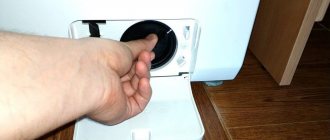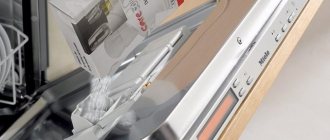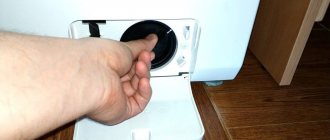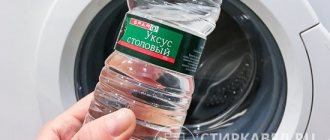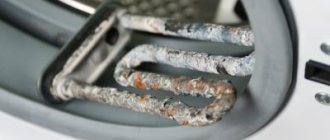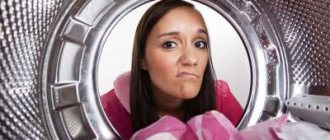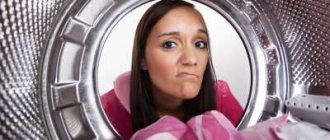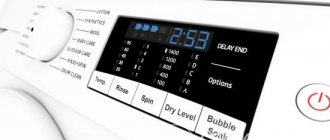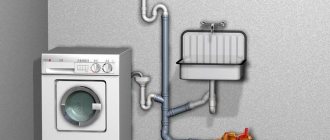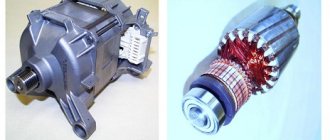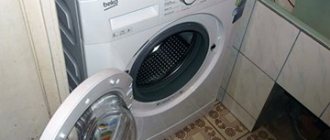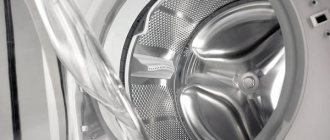Imagine that you bought a new washing machine, and everyone likes it: it works without failures, and washes flawlessly: the laundry is always fresh and smells good. But time passes, and newly washed clothes acquire an unpleasant odor. The reason lies in the “washing machine” itself: moisture constantly accumulates inside, mold and limescale form. All this together leads to the appearance of a disgusting “aroma”. The problem will be solved only by thorough cleaning of the washing machine, for example, with soda, vinegar, citric acid and other folk remedies.
Benefits of baking soda in fighting scale and odor
Soda in the everyday sense refers to the three most popular sodium compounds - carbonate (Na2CO3), bicarbonate (NaHCO3) and hydroxide (NaOH). To recognize these chemical compounds, you need to remember the names of soda: baking soda, soda ash and caustic soda. All these substances have two important properties - the ability to disinfect surfaces and dissolve calcium deposits. This is precisely the problem that washing machines can suffer from when frequently used with water without cleaning filters.
Hard water is the main cause of the formation of calcified plaque. It is easy to notice on the walls of the powder supply tray. The deposits are white in color and resemble pieces of wet chalk, but their hardness is comparable to stone.
The same layers may be present on the internal parts of the washing unit. Calcium settles on both plastic and metal parts of the device. The effect of plaque becomes especially critical for iron. If foreign layers begin to form at the joints of parts or on a rotating drum, this will physically interfere with the normal operation of the mechanism, grinding down the parts.
The second serious problem is the accumulation of bacteria that can cause mildew and mold. You can determine their appearance primarily by the color of the coating on the tray or the enamel under the rubber seal for the manhole cover. If a gray-green tint appears, this means that bacteria have begun to actively multiply.
Eliminating unpleasant odor
One of the signs of a clogged washing machine is the appearance of an odor due to bacteria and mold. The source must be removed. Baking soda is good for removing mold buildup. Mix it with vinegar in a one to one ratio. Wipe the parts where the risk of mold colonies is especially high: seal (cuff), drum, powder container.
Microorganisms that settle inside the machine release substances that have an unpleasant odor.
Their reproduction is due to the following reasons:
- incomplete drainage of water after washing;
- setting low temperatures when washing clothes;
- use of low-quality washing powders;
- use of hard water;
- incorrect connection of the drain hose to the sewer.
Limescale deposits can also give off an unpleasant odor.
To avoid having to take your car for repairs, clean its working parts regularly
What is the difference between baking soda and soda ash?
The differences between these sodium compounds lie in the level of alkali. The edible version is a mild substance that can regulate acidity. The traditional method of eliminating heartburn recommends diluting baking soda with water and drinking an improvised “fizzy drink”. It regulates the oxidation process in the stomach and also balances the digestion of food. Culinary experts are well aware of the ability of baking soda to speed up the fermentation process of dough by creating small air bubbles in its structure. Therefore, this ingredient is often used for baking fluffy flour products.
Many housewives use baking soda in combination with laundry soap shavings to safely clean kitchen surfaces, dishes or plumbing fixtures. The calcined version is a more aggressive alkali, therefore it is used only for household cleaning . It cannot be used for cooking.
Important! When working with soda ash, be sure to wear rubber gloves to protect your hands. For people with hypersensitivity, it is best to use additional protection, for example, a simple medical mask.
Soda can act as the main component of disinfection in the consistency of a slurry mixed with water. This refers to the physical cleaning of surfaces. A separate function is the ability to bleach thick cotton or linen fabrics. Soda ash can be sold under the name “linen” in special packaging in supermarket hardware departments. The powder is intended for adding thick white linen to the container during separate boiling. Some housewives pour a tablespoon of the mixture directly into the tray of the washing machine when washing on the “cotton” mode.
Reviews from experts
Experts advise cleaning the washing machine with soda once a month for preventive purposes. If it doesn’t work out so often, then be sure to do it once every 6 months. Experts emphasize that soda is especially important if the water is hard, since it is this quality that forms scale, which later leads to serious damage .
Advice! When using vinegar solution and soda, it is not recommended to exceed the established dosages of the first component, since in large quantities it negatively affects the rubber elements of the device.
Cleaning the washing machine with soda ash
If dirt or hard deposits are noticed in the machine tray or under the rubber band, then before cleaning it is necessary to check the condition of all accessible components and prepare them for cleaning:
- the tray is completely removed from the fastenings;
- the water supply is shut off, the emergency drain hatches and the water supply inlet are opened;
- meshes and plastic rings are removed;
- the hatch is opened, the surface under the sealing rubber and the drum are inspected.
Soda ash powder is diluted in half with water to a paste. For preparation, use enamel or metal utensils, an old toothbrush, a sponge, and rubber gloves.
It is most effective to apply the mixture to all surfaces with plaque and leave for one hour. After this, the cleaning mixture can be wiped with a sponge. If cleaning is required in a hard-to-reach place, or the sponge does not erase the plaque, then these areas can be rubbed with a toothbrush until the foreign elements are completely removed.
After cleaning, all parts must be rinsed with running water and returned to their original condition. For subsequent safe use, it is best to run the longest wash cycle without laundry (idle) at the highest possible temperature.
Advice! If soda ash is not available, you can do the same with regular food powder, but its effectiveness will be slightly lower.
Useful tips
If you follow a few simple recommendations when using an automatic washing machine, you will rarely need to clean the unit:
- The main cause of washing machine breakdowns is hard tap water with a high content of foreign impurities. To protect the internal parts of the machine from scale, it is recommended to install water filters. If this is not possible, you should use water softeners, for example, Calgon.
- In addition to chemicals, ordinary household products can help soften water. When washing, you can add baking soda to the detergent tray from time to time; it has a positive effect on the composition of the water and makes it less hard.
- In addition to scale, the automatic machine is damaged by fine dirt, which accumulates over time on the internal elements of the unit. Before washing, it is recommended to carefully check the pockets of clothing, as well as shake off items and brush them to remove small threads, hair, wool and dust particles.
- The most vulnerable parts of the washing machine are the sealing collar and the drain filter. Once every 2 months it is recommended to carry out a small cleaning of these elements. The cuff on the machine hatch can be regularly wiped with soapy water; the filter must be unscrewed and cleaned manually from accumulated debris.
When washing, you can use soda to soften the water, then scale will form more slowly
Important! It is recommended to disinfect a washing machine with vinegar no more than once every six months. With constant use of household solvent, the condition of the rubber elements will deteriorate, and the machine will, one way or another, require repair.
How else can you clean your washing machine?
High-quality cleaning of a washing machine is possible not only with soda, but also with other well-known folk remedies. For example, citric acid. To clean the tank, about 200 grams of acid is enough. This amount can be poured directly into the drum of the washing machine or into the powder tray - depending on what exactly you are going to clean.
Some people prefer squeezed lemon juice to citric acid, believing that it also effectively removes dirt. This is a misconception: the juice has a much lower concentration and is unlikely to cope with scale and old limescale.
One of the most effective compositions for cleaning the inside of a washing machine is table vinegar (9%). Pour it into the machine tray and run a long wash cycle at high temperature. Do not load laundry into the hatch. After an hour, you need to pause the machine, wait about an hour and after a break, start the wash cycle again. After finishing the job, clean individual parts using an old toothbrush or a small brush. This is done in order to remove any remaining scale.
When the cleaning procedure is completed, do not forget to wipe all elements with a dry soft cloth or cloth. It is better to leave the drum of the machine open so that it is ventilated and after some time the unpleasant smell of vinegar evaporates.
Prevention for rubber
Residual moisture and dirt accumulate in the door sealing rubber. Therefore, mold often appears here. SMA manufacturers strongly recommend wiping the cuff dry after each wash cycle and leaving the hatch open.
Expert opinion
I work in the household appliance repair industry. Extensive experience in restoring washing machines and dishwashers.
Ask a Question
Once a week, it is necessary to treat the rubber with a soda solution using a soft cloth to prevent the appearance of fungus. A toothbrush or small brush will help you get to hard-to-reach places. At the same time, you cannot pull the rubber too hard, as this can damage the surface.
Can I use vinegar?
Vinegar, which is familiar to us, has proven itself to be a good remedy for regular care of household appliances. The following properties of the solution are of particular value:
- disinfectants – fights pathogenic microorganisms and fungi;
- dissolving – allows you to soften scale and effectively remove it from contaminated surfaces;
- deodorizing - perfectly eliminates unpleasant odors, and the characteristic sour aroma quickly disappears;
- whitening - copes well with dark spots and coloring components.
Such results can be obtained after using white table vinegar with a concentration of 9% - it is absolutely transparent and leaves no traces behind.
You cannot use apple cider vinegar or wine vinegar for cleaning - they contain natural dyes and can leave streaks.
But concentrated vinegar essence is suitable - just dilute it with clean water in a ratio of 1 to 7 to get regular vinegar for cleaning.
You can clean your refrigerator with vinegar, described in detail here.
